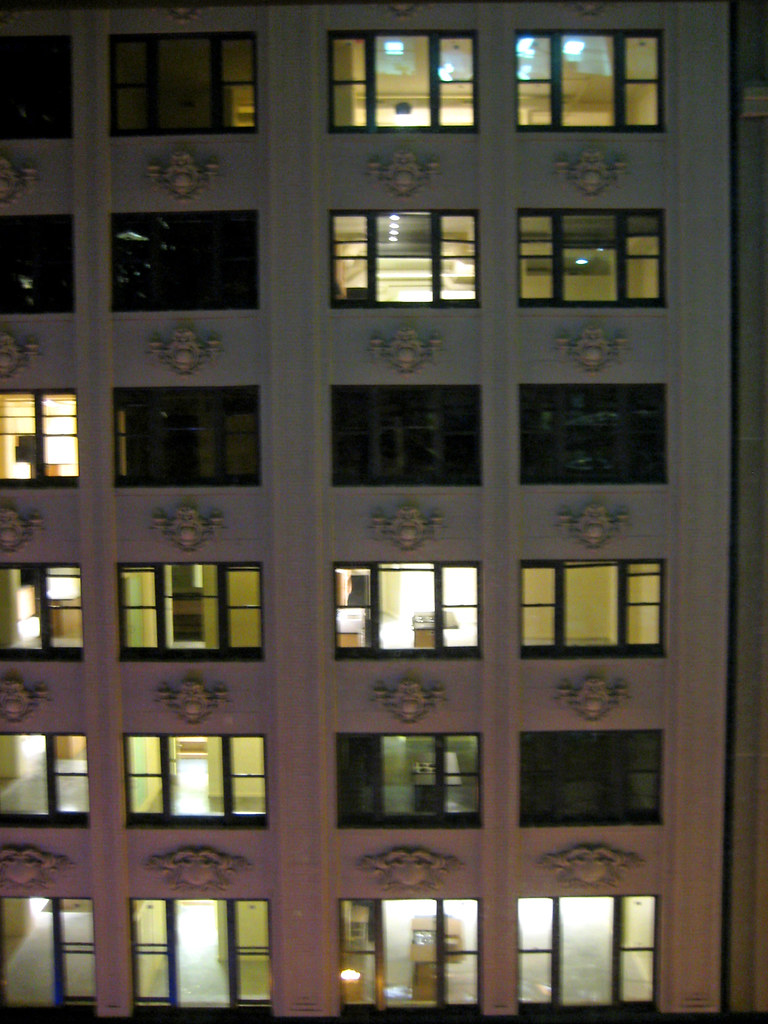 The signs asking for volunteers & sponsors and the pleas for help spray painted on the board-ups could not save Gaslight Square from ultimate destruction. Even the fresh coat of paint applied to the buildings by Patrick Schneider of the Gaslight Square Preservation Society could not bring back the fabled block of Olive centering on Boyle Avenue.
The signs asking for volunteers & sponsors and the pleas for help spray painted on the board-ups could not save Gaslight Square from ultimate destruction. Even the fresh coat of paint applied to the buildings by Patrick Schneider of the Gaslight Square Preservation Society could not bring back the fabled block of Olive centering on Boyle Avenue.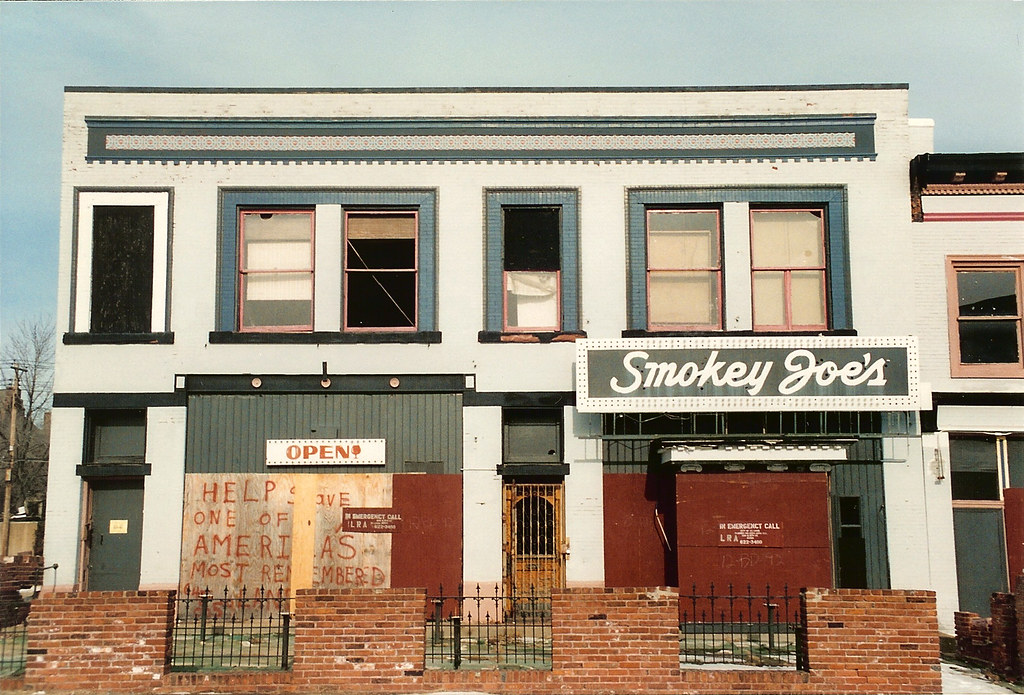 The destruction of Gaslight Square can only be described as one of the greatest losses of St. Louis' cultural history and one of the biggest missed opportunities in the last few decades. I will not attempt to summarize the history of the Square here, as there would be too much to say. Instead, you can follow the links below or read Thomas Crone's: Gaslight Square an Oral History
The destruction of Gaslight Square can only be described as one of the greatest losses of St. Louis' cultural history and one of the biggest missed opportunities in the last few decades. I will not attempt to summarize the history of the Square here, as there would be too much to say. Instead, you can follow the links below or read Thomas Crone's: Gaslight Square an Oral History I have divided this post into two parts to focus of the two major waves of demolition that occurred in recent memory. By 1993 when I took this set of photos of the remaining buildings of the north side of the street, many others in each direction had already disappeared over the years. This included the Musical Arts Building that burned in 1969 after surviving two tornados and another fire in 1962. In 1994 this entire row of buildings met their doom, leaving no trace of the former district on the north side of the street. The buildings on the sough side would last yet another decade (following post).
I have divided this post into two parts to focus of the two major waves of demolition that occurred in recent memory. By 1993 when I took this set of photos of the remaining buildings of the north side of the street, many others in each direction had already disappeared over the years. This included the Musical Arts Building that burned in 1969 after surviving two tornados and another fire in 1962. In 1994 this entire row of buildings met their doom, leaving no trace of the former district on the north side of the street. The buildings on the sough side would last yet another decade (following post).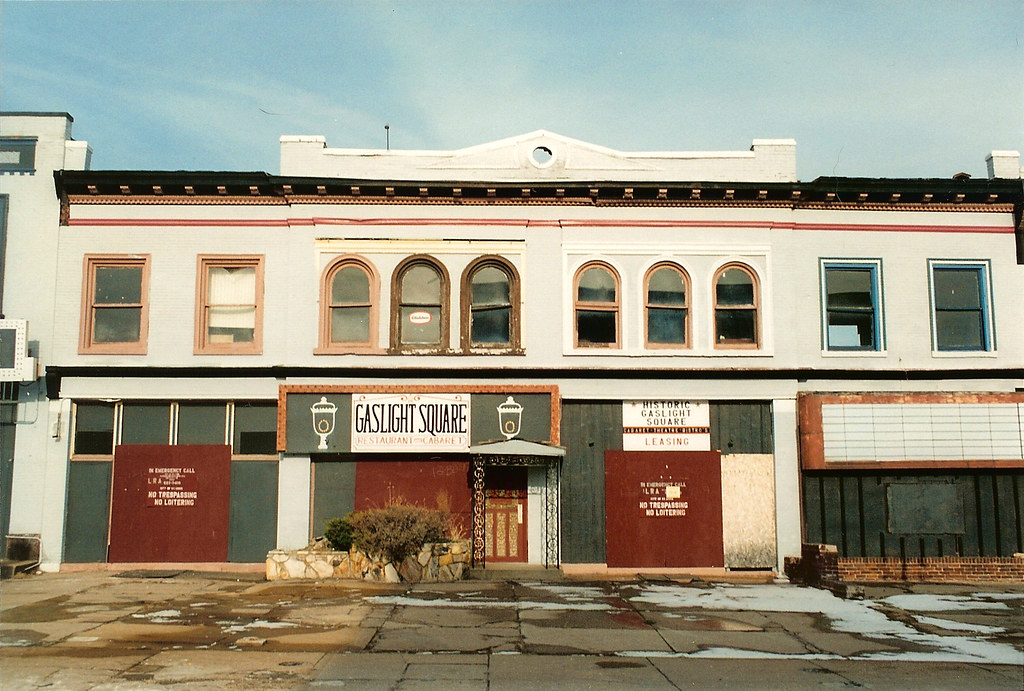 It seems that most of the buildings in Gaslight Square were simply abandoned after the restaurants and music spots shut their doors in the early 1970's (one lone survivor, the Prestige Lounge stayed open almost to 1990). This row of buildings was owned by the City's biggest slum lord and most notorious applicant of demolition permits, the LRA. As you can see from the photos, the exterior of these buildings appeared to be in good condition, although 20 years of abandonment had surely taken their toll on the roof and interiors. Still though, the buildings were not at all beyond saving for rehabilitation (I will focus more on that concept in the next post), but were demolished anyway.
It seems that most of the buildings in Gaslight Square were simply abandoned after the restaurants and music spots shut their doors in the early 1970's (one lone survivor, the Prestige Lounge stayed open almost to 1990). This row of buildings was owned by the City's biggest slum lord and most notorious applicant of demolition permits, the LRA. As you can see from the photos, the exterior of these buildings appeared to be in good condition, although 20 years of abandonment had surely taken their toll on the roof and interiors. Still though, the buildings were not at all beyond saving for rehabilitation (I will focus more on that concept in the next post), but were demolished anyway.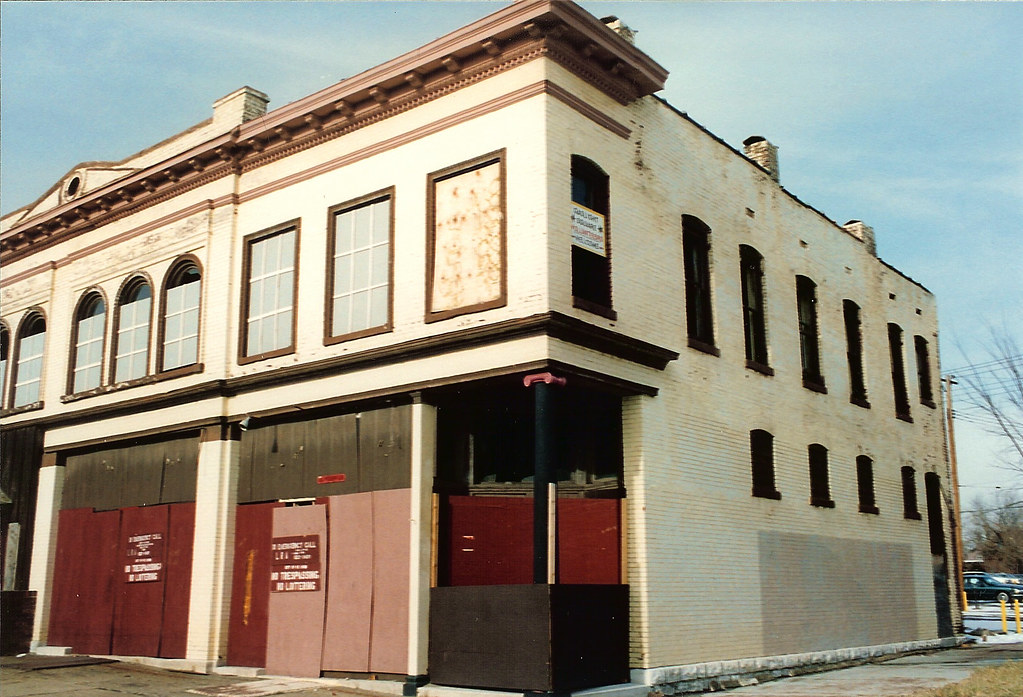 One of the most photographed spots on the Square, the free-standing columns at the former Smokey Joe's Greecian Terrace in 1993, and 30 years earlier, in 1963 (photo from the Western Historical Manuscript Collection at UMSL). You can see the rest of my 1993 photos of Gaslight on Flickr.
One of the most photographed spots on the Square, the free-standing columns at the former Smokey Joe's Greecian Terrace in 1993, and 30 years earlier, in 1963 (photo from the Western Historical Manuscript Collection at UMSL). You can see the rest of my 1993 photos of Gaslight on Flickr.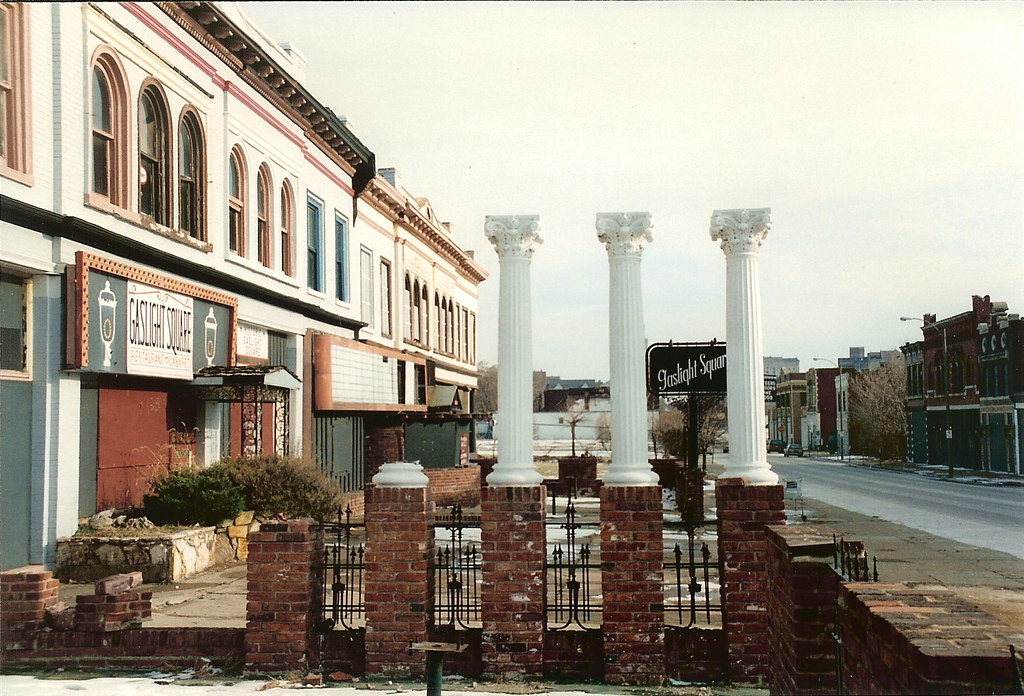
 For more information about Gaslight Square see: The Legend of Gaslight Square and two documentary previews on YouTube
For more information about Gaslight Square see: The Legend of Gaslight Square and two documentary previews on YouTubeTo see over 50 photos of Gaslight Square in it's heyday, check out the Western Historical Manuscript Collection Photo Database and simply type: Gaslight Square.
Also, read a fascinating article from Time Magazine, Friday, May 18, 1962: No Squares on the Square and one from the RFT published exactly 37 years and one day later: Lights Out

